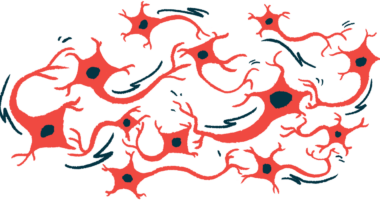Mitochondrial abnormalities seen early in many forms of ALS: Study
'Common factors' could be targets for treatment

A study found that genetic mutations associated with amyotrophic lateral sclerosis (ALS) lead to problems with the function and transport of mitochondria, cellular structures needed for energy production, early in the disease course, before abnormal protein clumps are formed.
“We show that the nerve cells, termed motor neurons, that will eventually die in ALS have problems soon after they are formed,” Eva Hedlund, PhD, co-author of the study and a neurochemistry professor at Stockholm University, said in a university news story. “We saw the earliest sign of problems in the cell’s energy factories, the mitochondria, and also in how they are transported out into the nerve cells’ long processes where there is a great need for them and the energy they produce.”
These mitochondrial abnormalities are seen in ALS cell models associated with various genetic mutations, implying that this could be a treatment target for many genetic forms of ALS.
“This means that there are common factors that could be targeted with drugs, regardless of the cause of the disease,” Hedlund said.
The study, “Single-cell RNA-sequencing reveals early mitochondrial dysfunction unique to motor neurons shared across FUS– and TARDBP-ALS,” was published in Nature Communications.
Motor neurons and forms of ALS
In ALS, motor neurons — the nerve cells that control muscle movement — become gradually damaged and die. The molecular mechanisms that drive ALS are incompletely understood, and it’s not clear why ALS-associated mutations specifically affect motor neurons but not other types of nerve cells.
Aiming to better understand these mechanisms, researchers engineered human stem cells to contain various types of ALS-causing mutations in the genes FUS or TARDBP, which are mutated in up to 8% of familial ALS cases and about 2% of sporadic ALS cases. They then primed the stem cells to mature into motor neurons and interneurons, nerve cells that are particularly resistant to neurodegeneration in ALS, and performed detailed analyses on the mature cells.
Data showed that motor neurons carrying ALS-associated mutations showed widespread changes in their transcriptional activity. In other words, there was dysregulation in which genes were turned on or off. The changes in transcriptional activity were much more pronounced in motor neurons than in interneurons.
“In the data we obtained, we identified a common disease signature across all ALS-causing mutations, which was unique to motor neurons,” said study co-author Christoph Schweingruber, PhD.
Across the different ALS-associated mutations, genes related to the activity of mitochondria were particularly dysregulated in motor neurons. Analyses of cells carrying ALS-causing mutations in a third gene, C9orf72, likewise indicated dysregulation of genes needed for mitochondrial activity.
Because similar dysfunction was seen across ALS cell lines with different mutations, the researchers said that it is “likely that our analysis detects an early dysfunction in motor neurons specifically that could be at the heart of why they display higher intrinsic vulnerability in response to ALS mutations.”
Mitochondria are the powerhouses of the cell, playing key roles in generating the energy needed for cells to function. In motor neurons, mitochondria need to be transported out into the long, wire-like structures that nerve cells use to connect with each other and the rest of the body. This allows the nerve cell to have energy for sending signals.
However, the team found that in motor neurons carrying ALS-causing mutations, the transport of mitochondria is impaired, so nerves don’t have energy to properly send signals.
“Without [mitochondria in nerve fibers] the nerve cells do not have enough energy to communicate properly with other cells,” Hedlund said.
Mitochondria as ‘early and pivotal target’
The FUS gene provides instructions to make the FUS protein, while the TARDBP gene encodes a protein called TDP-43. Mutations in these genes are known to result in abnormal proteins that are prone to clump outside the nucleus, where they are normally needed to exert their function.
This protein mislocalization has been thought to be a key reason that these mutations cause ALS. The researchers found, however, that the problems with mitochondrial transport were seen even when the proteins were not mislocalized, implying that mitochondrial dysfunction occurs earlier than protein mislocalization. If that’s true, the researchers argued, then mitochondrial movement could be a key target for treating ALS.
“We observe these perturbances [in mitochondrial transport] also in the absence of apparent FUS and TDP-43 mislocalization, pointing towards mitochondria as an early and pivotal target to modulate in ALS,” they wrote.
The researchers said they are working to better understand how ALS-causing mutations lead to problems with mitochondrial transport, with the ultimate goal of creating new treatments.
“We are trying to understand how these early errors occur in the sensitive motor neurons in ALS, and how it affects energy levels in the cells and their communication and necessary contacts with muscle fibers,” Hedlund said. “We believe that these are important keys to the understanding of why the [connections] between motor neurons and muscles is broken in ALS and also to identify new targets for therapies.”








